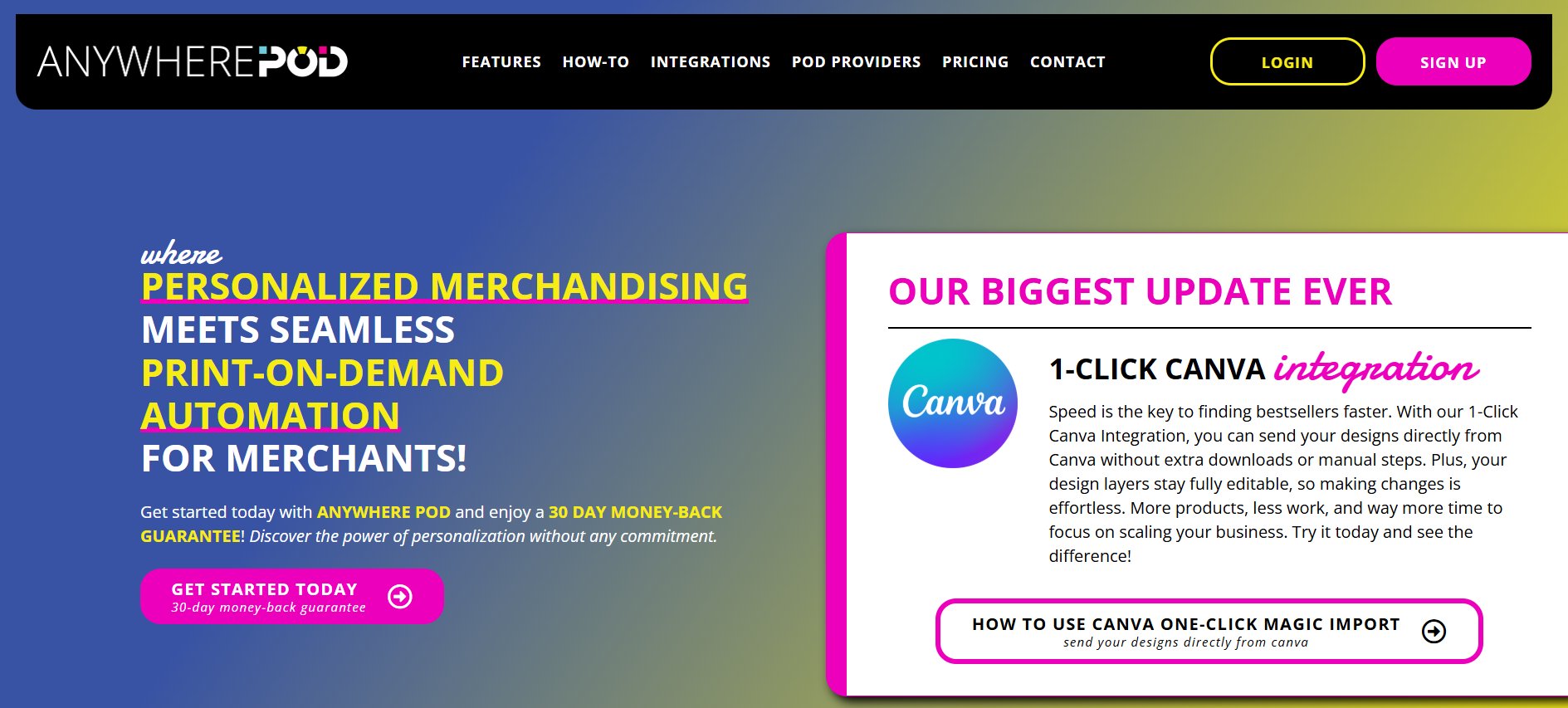AnywherePOD
AnywherePOD helps print-on-demand sellers link multiple storefronts and providers into a single workflow. Sync products and variants, route orders to the right printer, and keep tracking updates consistent across channels—without custom scripts. It’s ideal for sellers who operate on several marketplaces or use multiple POD partners. Below you’ll find what it does, key features, pros & cons, and practical tips.
What is AnywherePOD?
AnywherePOD is an operations layer for print-on-demand businesses. It connects your marketplaces and stores with one or more print providers, consolidates orders, applies routing rules, and syncs shipment updates back to every channel. The goal is to reduce manual work and errors when you sell across several platforms.
Connects: Marketplaces/stores ↔ POD/fulfillment partners
Core Functions: Order routing, product sync, tracking updates
Pricing: Subscription with volume-based limits
Skill Level: Intermediate (light setup; no coding required)
Benefits: Fewer manual steps, fewer errors, faster fulfillment
Key Features
Unified Order Inbox
Pull orders from multiple storefronts into a single queue with consistent statuses and tags.
Smart Routing Rules
Send line items to the right POD partner based on SKU, product type, region, or margin rules.
Product & Variant Mapping
Map storefront variants to supplier SKUs to avoid mismatch and speed up onboarding.
Artwork Handling
Attach print files, size charts, and notes automatically so vendors get complete instructions.
Tracking Sync
Import tracking from vendors and push updates back to each marketplace and the customer.
Analytics & Exceptions
Monitor turnaround times, failure points, and costs; get alerts on orders that need attention.
Pros & Cons
Pros
- Centralizes orders and fulfillment across channels
- Flexible routing for multi-vendor or regional printing
- Reduces manual CSVs, emails, and copy-paste errors
- Clear visibility into order status and turnaround times
- Scales from small catalogs to large multi-store setups
Cons
- Initial mapping and rule setup takes time
- Monthly fees add overhead at very low order volumes
- Advanced features are most useful for multi-store ops
Best For
Sellers running multiple stores or marketplaces, brands using more than one POD provider, and agencies that manage fulfillment for clients.
Pricing & Plans
Subscription plans scale by order volume and the number of connected stores/providers. Higher tiers unlock advanced routing, analytics, and priority support. Choose based on monthly orders and how many vendors you need to connect.
Tips for POD Sellers
- Adopt a clear SKU strategy (prefix by product and vendor) to simplify mapping.
- Create routing rules for domestic vs. international shipments to reduce shipping time.
- Store print files and sizing notes in a consistent folder structure for automated attachment.
- Set alerts for orders stuck in pending, artwork errors, or long production times.
- Review vendor performance monthly and adjust routing priorities accordingly.
Where AnywherePOD Fits in Your POD Stack
AnywherePOD is your operations backbone—sitting between marketplaces (Amazon, Etsy, Shopify) and your POD partners. Use design tools (Kittl, Canva, Vexels) for artwork, mockup tools (Placeit, Pixelcut) for visuals, and research/marketing tools (Merch Dominator, Helium 10, Outfy, FastMoss) to drive demand. AnywherePOD ensures fulfillment keeps up as you scale.
Alternatives
FAQ
Can I split an order between different POD providers?
Yes. Routing rules can send line items to different vendors automatically.
Does it update tracking on every marketplace?
Tracking numbers are pulled from providers and synced back to connected channels.
Who benefits most?
Multi-channel sellers and teams juggling several POD partners or warehouses.
